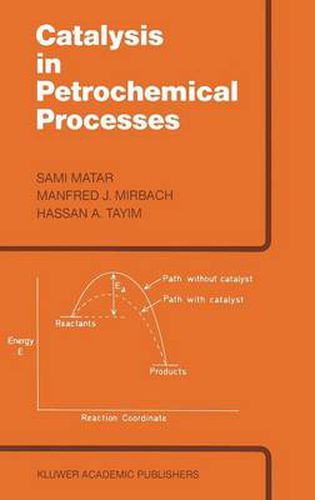Readings Newsletter
Become a Readings Member to make your shopping experience even easier.
Sign in or sign up for free!
You’re not far away from qualifying for FREE standard shipping within Australia
You’ve qualified for FREE standard shipping within Australia
The cart is loading…






This title is printed to order. This book may have been self-published. If so, we cannot guarantee the quality of the content. In the main most books will have gone through the editing process however some may not. We therefore suggest that you be aware of this before ordering this book. If in doubt check either the author or publisher’s details as we are unable to accept any returns unless they are faulty. Please contact us if you have any questions.
The field of petrochemicals started some years ago with the simple addition reaction of water to propylene for the production of isopropyl alcohol. Currently, the petrochemical industry has become a multi-billion dollar enterprise which encompasses a wide field of chemical products. Almost all the basic organic reactions such as hydrogenation, alkylation, substitution, polymerization, etc. are utilized for the production of these chemicals. It may not, however, have been possible to establish this huge industry without the use of different catalysts. In other words, the great advancements in the catalytic area have supported the vast developments in the petrochemical field. In this book, we have adopted the idea of discussing the petrochemical industry from the point of view of reactants’ activities and susceptibilities toward different catalysts. The book is thus classified according to the reaction type. This will eriable students and other users of the book to base their understanding of the petrochemical field on the fundamental principles learned in chemistry. How ever, the first chapter is aimed at establishing some basic facts on the petro chemical industry and its major uses. It discusses, without going into details, the raw materials used, the intermediates and the downstream products. The next eight chapters discuss in some detail the main reactions and the catalysts used for the production of chemicals and polymers from petroleum. The last chapter is devoted to a discussion of some of the practical techniques used in the catalytic field.
$9.00 standard shipping within Australia
FREE standard shipping within Australia for orders over $100.00
Express & International shipping calculated at checkout
Stock availability can be subject to change without notice. We recommend calling the shop or contacting our online team to check availability of low stock items. Please see our Shopping Online page for more details.
This title is printed to order. This book may have been self-published. If so, we cannot guarantee the quality of the content. In the main most books will have gone through the editing process however some may not. We therefore suggest that you be aware of this before ordering this book. If in doubt check either the author or publisher’s details as we are unable to accept any returns unless they are faulty. Please contact us if you have any questions.
The field of petrochemicals started some years ago with the simple addition reaction of water to propylene for the production of isopropyl alcohol. Currently, the petrochemical industry has become a multi-billion dollar enterprise which encompasses a wide field of chemical products. Almost all the basic organic reactions such as hydrogenation, alkylation, substitution, polymerization, etc. are utilized for the production of these chemicals. It may not, however, have been possible to establish this huge industry without the use of different catalysts. In other words, the great advancements in the catalytic area have supported the vast developments in the petrochemical field. In this book, we have adopted the idea of discussing the petrochemical industry from the point of view of reactants’ activities and susceptibilities toward different catalysts. The book is thus classified according to the reaction type. This will eriable students and other users of the book to base their understanding of the petrochemical field on the fundamental principles learned in chemistry. How ever, the first chapter is aimed at establishing some basic facts on the petro chemical industry and its major uses. It discusses, without going into details, the raw materials used, the intermediates and the downstream products. The next eight chapters discuss in some detail the main reactions and the catalysts used for the production of chemicals and polymers from petroleum. The last chapter is devoted to a discussion of some of the practical techniques used in the catalytic field.